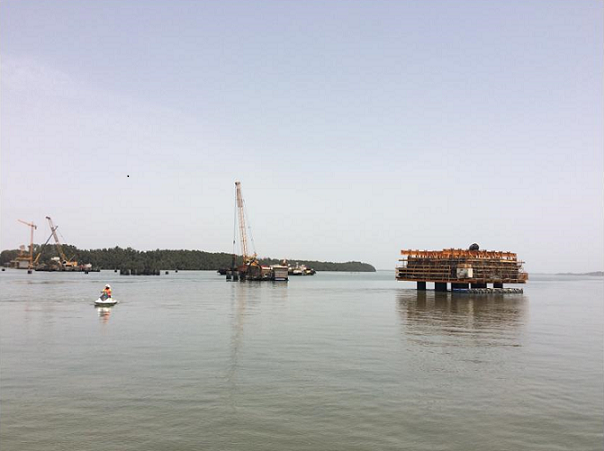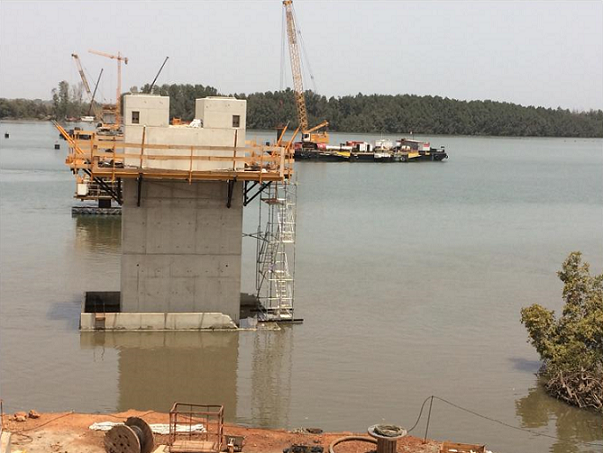Gambia is a country that has its border on the river with the same name, and virtually divides Senegal from West to East, thereby making travelling by land between Casamance and the capital complicated. Since the 1970s, various studies for a crossing have been undertaken.
These studies were resumed by the Gambia River Basin Development Organization (OMVG) in 2010 with funding from the African Development Bank, which led to a call for tenders for the construction of this structure. A consortium composed of Studi International and SETEC TPI, together with TERRASOL, is the tenderer appointed for the project management during the construction phase. The tender file defines the crossing structure as a pre-stressed segmental bridge, 942 m long between abutments, with access embankments of approximately 600 m and 900 m on either side.
The geological setting consists of fine alluvium deposits in the river bed, with compressible areas of mangrove for the accesses. The ground investigation highlighted the following issues: low compacity of the fine alluvial deposits in the first few metres of the river bed, and compressibility of the foundation soils below the access embankments (organic clays).
The following solutions were considered initially:
- Long piles under the bridge supports, executed using driven steel tubes,
- Consolidation of the soil layers below the low embankments,
- Lightweight embankment (polystyrene) below the highest embankments.
The technique considered to execute the piles was actually applied in the construction phase, because it seemed to be the most suitable technique considering the geotechnical setting and the available construction resources available locally.
For the access embankments, the contract originally planned to validate the technical solutions by executing an instrumented test embankment. However, due to the site’s organizational difficulties, the test embankment could not be executed until very late on, and the interpretation of the measurements obtained (controlled by TERRASOL) concluded that the consolidation times would be lengthy, and could lead to postpone the commissioning date for the structure. As the Owner did not want to delay the commissioning, the decision was taken with the contractor to switch to access piers supported by driven piles.
Throughout the construction engineering process, TERRASOL handled various project management assignments:
- Verification and validation of the assumptions and calculations provided by the Contractor,
- Contribution to adaptations and technical changes to the project,
- Expertise on soil/structure interaction with complex soil behaviour (pile groups under vertical, horizontal and torsional loading; soil consolidation with creep behaviour), using Foxta software.
Terrasol’s achievements
- Verification and validation of the assumptions and calculations provided by the Contractor,
- Contribution to adaptations and technical changes to the project,
- Expertise on soil/structure interaction with complex soil behaviour, using Foxta software
 Agent Access
Agent Access 





